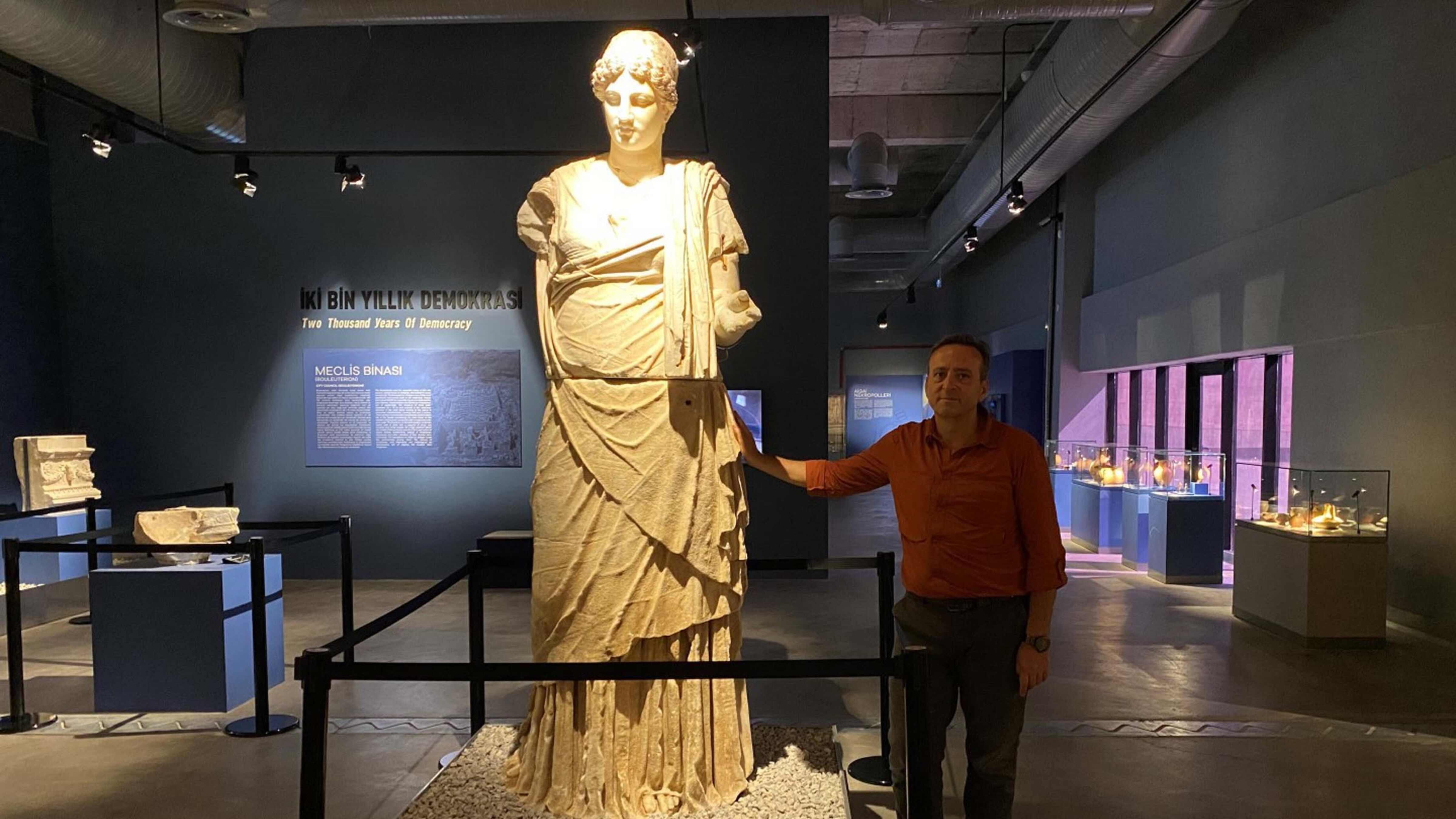
A rare statue of the goddess Hestia, known in antiquity as the protector of homes and cities, is now on public display at the newly opened Manisa Museum.
Discovered in 2005 during archaeological excavations in the ancient city of Aigai, located in Manisa’s Yunusemre district, the 2.7-meter-tall marble sculpture is considered the only surviving example of a Hestia statue dating from the Hellenistic period.
The unveiling marks a significant moment in both archaeological preservation and museology in Türkiye, as the sculpture had remained in storage for nearly two decades before being moved to its new permanent home.
The statue now stands at the center of a specially designed exhibition space that replicates the layout and atmosphere of Aigai’s Bouleuterion, or council hall, where the statue originally stood.
“This is not just any artifact,” said Professor Yusuf Sezgin, head of the Aigai excavation project and chair of the archaeology department at Manisa Celal Bayar University. “This is the only known statue of Hestia from the Hellenistic period to have reached us intact. It stood in the heart of Aigai’s public life, overseeing council decisions as a divine symbol of civic unity and order.”
In ancient Greek cities, statues of Hestia were often placed in council buildings as a spiritual anchor, symbolizing the stability of governance and the collective life of the polis. According to Sezgin, the positioning of the statue in the museum — just as it would have been viewed by ancient lawmakers — invites visitors to experience a sense of continuity with the ancient world.
“When you stand in front of her, you understand her role,” said Sezgin. “In antiquity, those making decisions for the city would look into her eyes. She was a constant presence in political life, representing the moral and social responsibilities of governance.”
Though statues of her Roman counterpart, Vesta, exist in collections around the world, none date back to the Hellenistic period. “What makes this statue so unique,” Sezgin explained, “is that it predates the Roman reinterpretation. It’s a direct link to an earlier period in classical civilization.”
The exhibit also features an important group of honorary statues unearthed during the same period, now installed alongside the Hestia sculpture. These statues depict Antiphanes and his son Diaphenes, benefactors who helped finance the reconstruction of Aigai’s council hall around 2,200 years ago. Their names are inscribed on the original statue bases, also recovered during the excavations between 2004 and 2006.
“These statues were part of a civic tribute,” said Sezgin. “They were placed in the council building as a sign of gratitude from the city’s citizens. Today, they offer valuable insight into the political culture of the time.”
The Hestia statue and the honorary group represent one of the most complete examples of a Hellenistic civic sculpture ensemble ever discovered in Anatolia. With their original placement preserved and restored, the display offers a rare glimpse into how such public spaces functioned — not only as centers of power but also as sites of ritual and communal identity.
The new Manisa Museum, which houses these artifacts, has quickly emerged as a significant archaeological and cultural venue. With hundreds of objects from Aigai and surrounding sites, it offers visitors an immersive experience into the region’s deep historical layers.
“Aigai was one of the 12 cities of the Aeolian League and played a key role in the ancient world,” said Sezgin. “Thanks to the museum, its story can now be told in greater depth, with key artifacts shown in their historical context.”
With the Hestia sculpture now in place, the museum not only strengthens its position within Türkiye’s network of archaeological institutions but also gains prominence on the global stage. As Sezgin concluded, “This is a piece that belongs to world heritage. Anyone interested in ancient history should come and see it.”